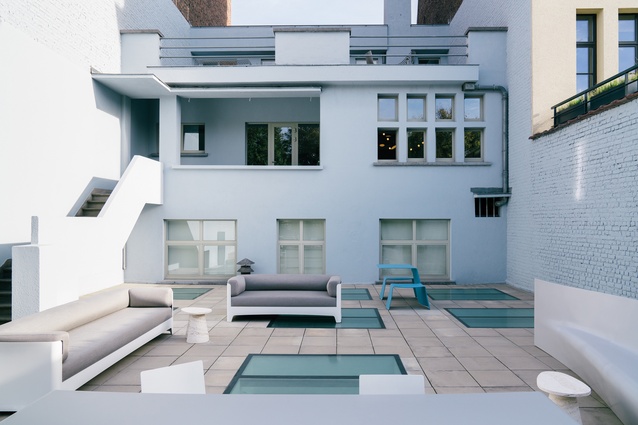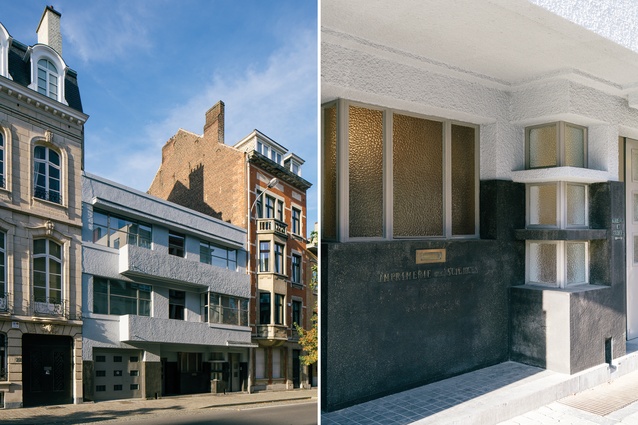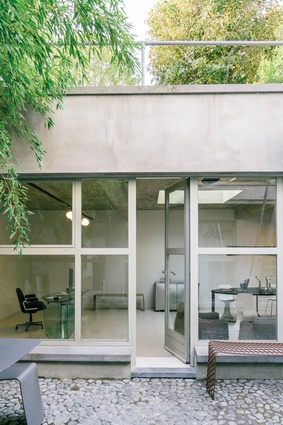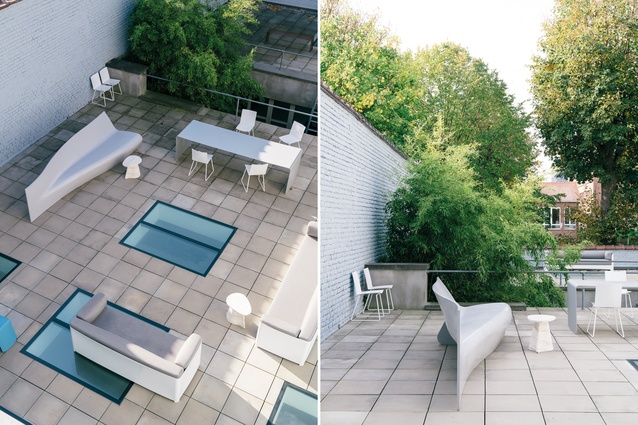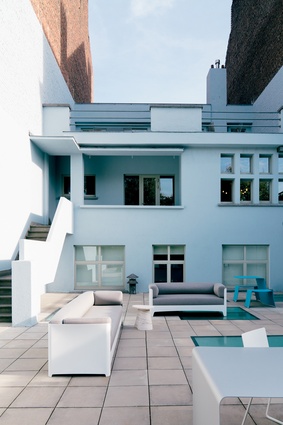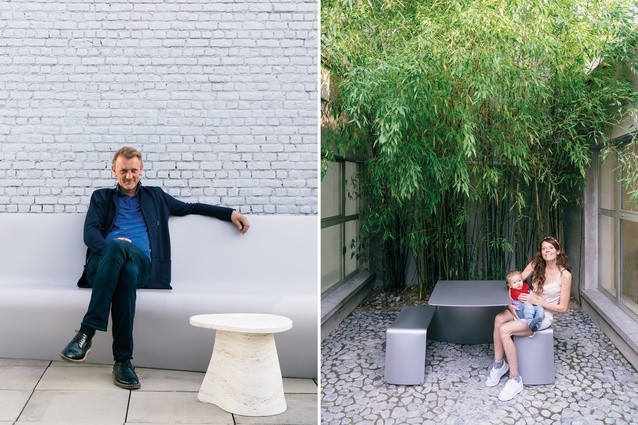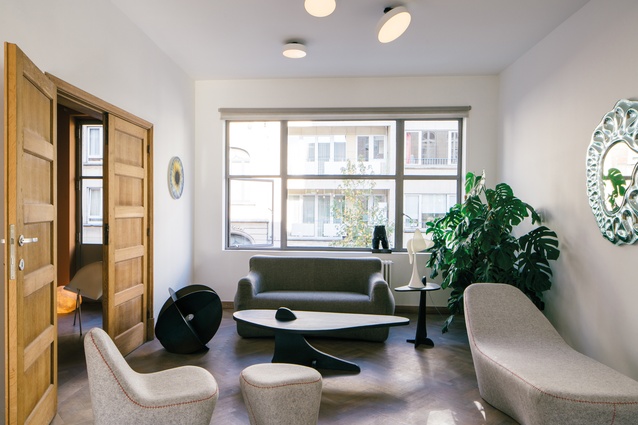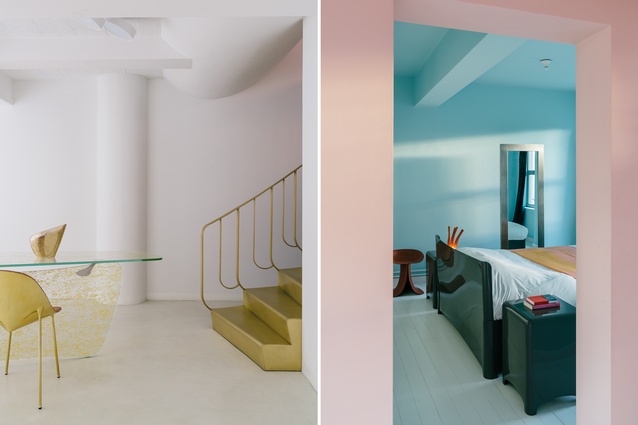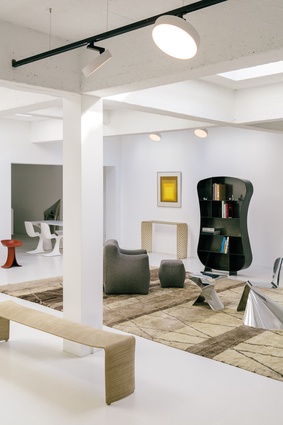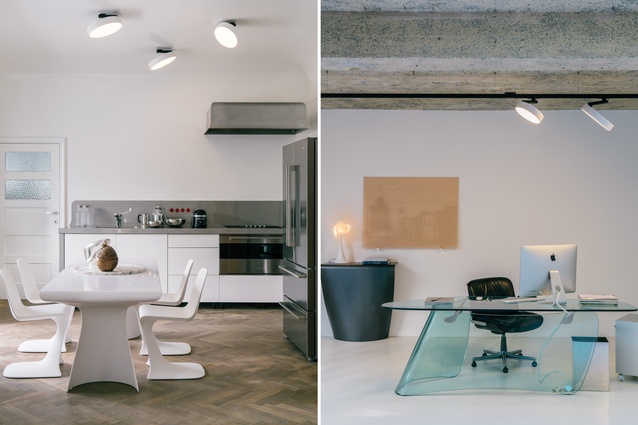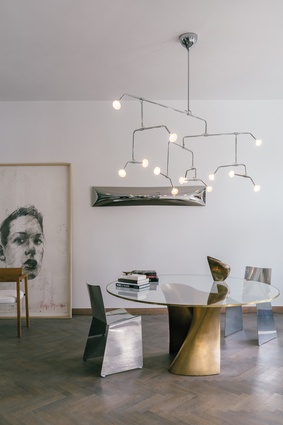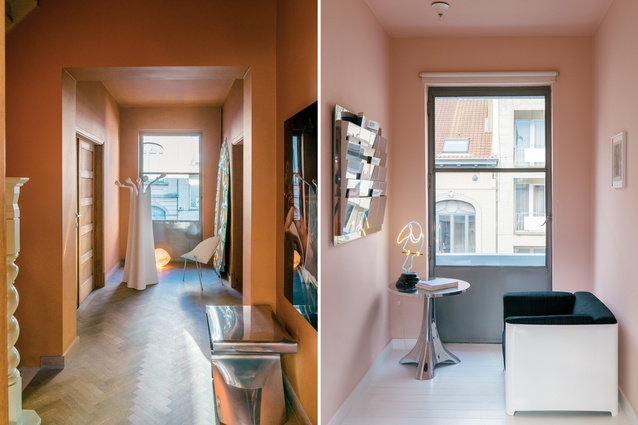Show home: Brussels studio
We step into the home/studio of Belgian designer Xavier Lust. As Camille Khouri finds out, the abode has been reconfigured from an old print shop and is bursting with the designer’s eclectic works, references to Italy and delightful colour.
An early-modernist structure, built in 1927 and wedged between two taller, narrower and more-traditional Belgian buildings, has proved to be the perfect home for Xavier Lust, in terms of both his work and his domestic life.
The designer lives on the upper floors with his family, while the lower floors serve as showroom and studio space. “Modernist architecture is interesting and creates an interesting dialogue with my pieces, which, generally, have curves and dynamic movement. This is a nice contrast with the angular modernist architecture,” says Lust.
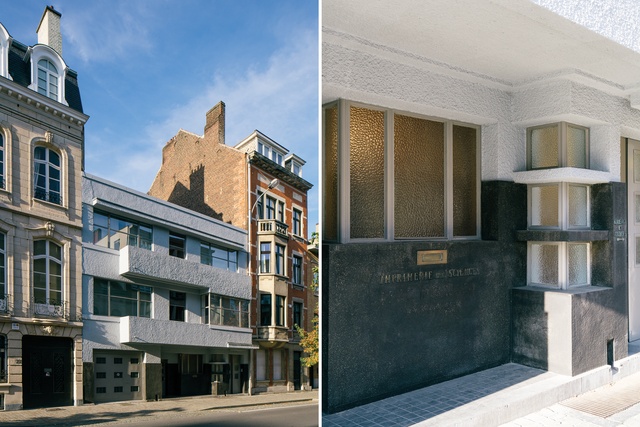
Lust took more than two years to restore the building, which includes a large terrace on the second floor where the designer hosts events for his clients. This previously unusable space features skylights on the floor, which have been insulated, and a non-slip fritting has been added to the glass.
This has the dual benefit of allowing guests and furniture to stand over them and of casting interesting shadows into the studio below. Some of Lust’s larger outdoor pieces take pride of place here; for instance, there is the Volupté bench, Flow sofa, La Grande Table, Picnik table and folded-aluminium BWB chairs.
“My target market today is high end so this is a perfect place to host people with high taste. The building is more like a gallery, instead of a shop. It is open by appointment – and only occasionally are clients invited to view the upper floors where we live,” says Lust.
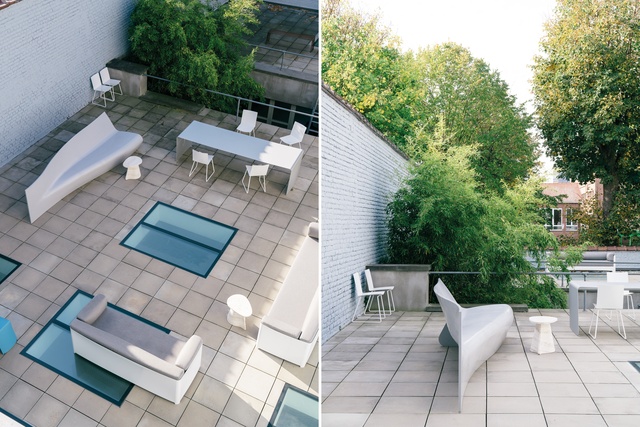
In his living areas, Lust has paid particular attention to colour, repainting some spaces over and over before he found the right tone. The bedroom is sky blue, juxtaposed against a small reading room next door, which is painted a soft pink.
The kitchen underwent many changes, from gold to yellow to orange and then back to white. “It was a bit too oppressive so we settled on a glossy white, which gives a nice sensation. Colours influence your life,” he says. The exterior of the building is what Lust laughingly calls a ‘sky grey’, referencing the often-wet weather in Brussels.
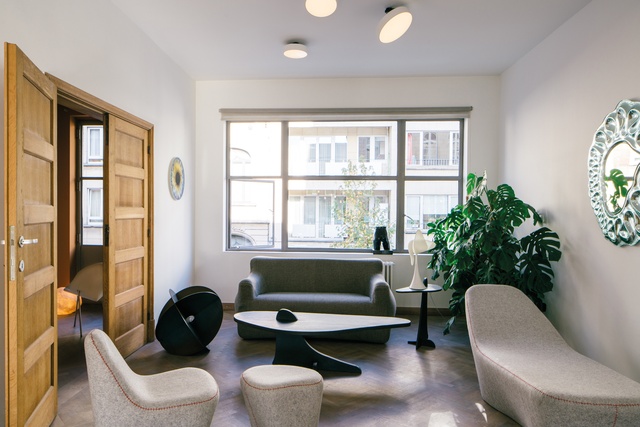
The original parquet flooring has been retained on the upper floors. In the studio, the flooring references the streets of Milan, with a cobblestoned look. Italy has been a strong influence on Lust and his work. Originally two rooms, the living-room space, where his bronze S-table is housed, has been opened up to create one long space. “It is like a Venetian parlour. I like this proportion and the reference to these incredible spaces.”
To create a sense of arrival to the studio below, Lust installed a brass staircase. “The stair is a piece of design. It seems as if it has been there already; you cannot really date it. It appears contemporary or from another world. I redesigned it maybe 30 times before coming to this final decision. Going to the basement is not a chic thing so I wanted to make it feel luxurious and welcoming. The 300m2 space is quite a surprise. The staircase creates an expectation of high luxury.”
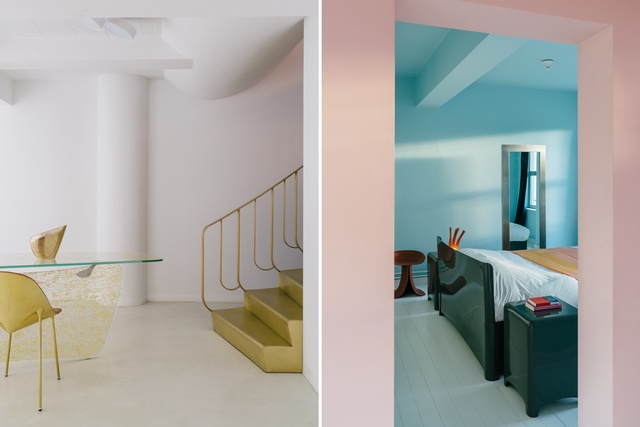
Lust’s big break came in 1996 when Ralph Lauren New York bought a folding screen he had designed; it was being exhibited at a gallery in Brussels. From there, Lust established his unique method of production using a folding machine to bend metal. The bench he created in 1999 using this method is still available from MDF Italia; this was the first company with which he signed a contract.
“I showed a prototype at Salone Italia in Milan, which is a platform for young designers. Big owners of Italian brands came to see my booth. I signed my first contract with MDF Italia and met important actors like Giulio Cappellini, Boffi, Terence Conran – and this all opened possibilities for collaboration. It was my work selling me not me selling my work, which I preferred,” says Lust.
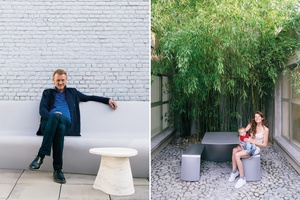
These days, Lust focuses more on art design, rather than on production, which he says can be limiting as price is always a factor. “Working with Italian brands with long chains of distribution, you have to consider that the production should not cost more than 100 Euro, so you must create something nice and innovative but also accessible in terms of price. This is a challenge, which I like, but I like art design as you have more freedom and it also touches on the concept of rarity – the opposite of working with production – as there will be only 12 pieces.”
With his family upstairs and his work surrounding him, Lust seems to have found his true home in this building in Brussels and, while he has plans to extend the house, for now he is satisfied. “The freedom of my life is I am not obliged to work certain hours; I can work anytime in any space of my home and studio,” he says. “I have a little boy who is 14 months; he is very powerful and funny, and he and his mother are a part of the activity of the house.”

